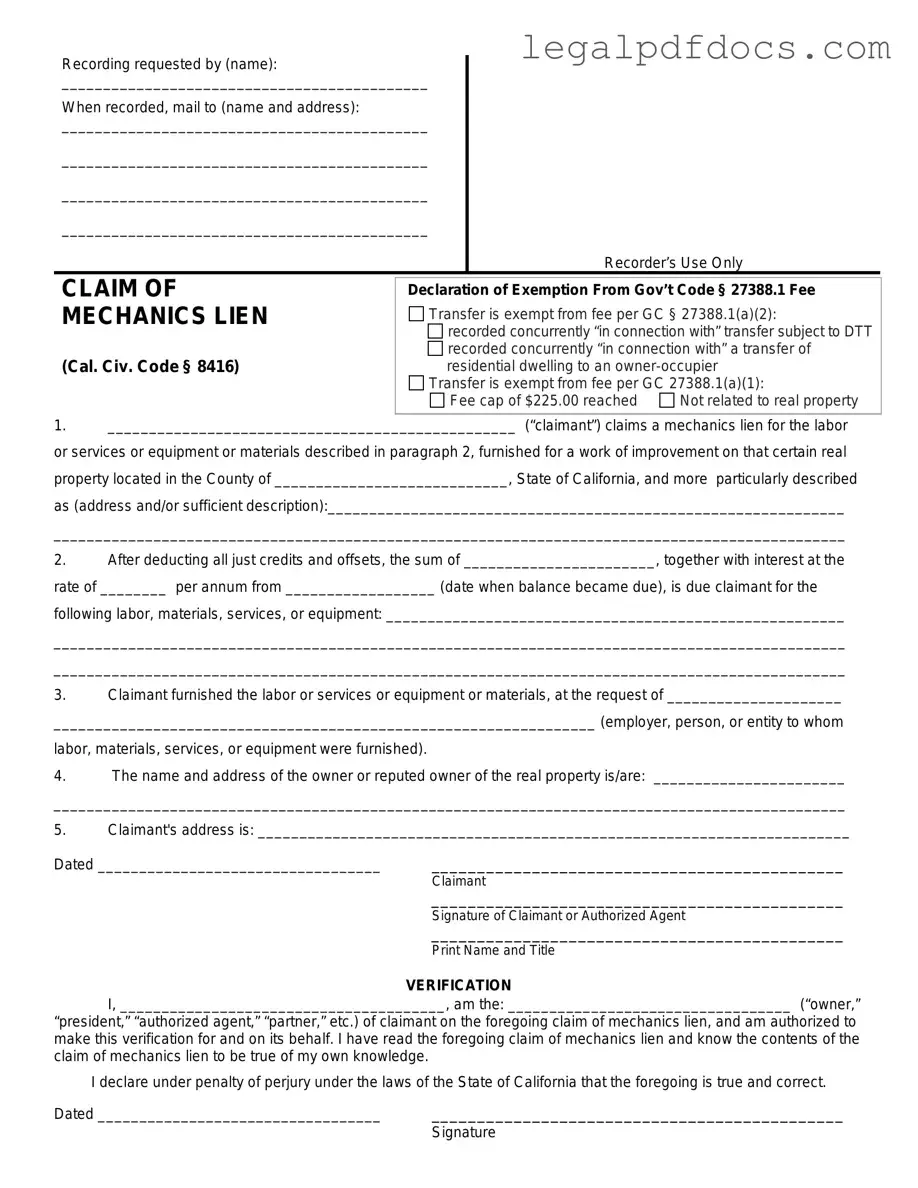In California, the Mechanics Lien form serves as a crucial tool for contractors, subcontractors, and suppliers who wish to secure payment for work performed or materials provided on a construction project. This legal document allows those who have contributed labor or materials to assert their right to payment by placing a lien on the property in question. Key aspects of the form include the requirement to provide specific information such as the property owner's name, a detailed description of the work completed, and the amount owed. Timeliness is essential; the lien must be filed within a certain period after the work is completed or materials are supplied. Additionally, the form must be notarized and recorded with the county clerk to be enforceable. Understanding the nuances of this form is vital for anyone involved in construction in California, as it not only protects the rights of those who contribute to a project but also outlines the necessary steps for enforcing those rights should payment disputes arise.
